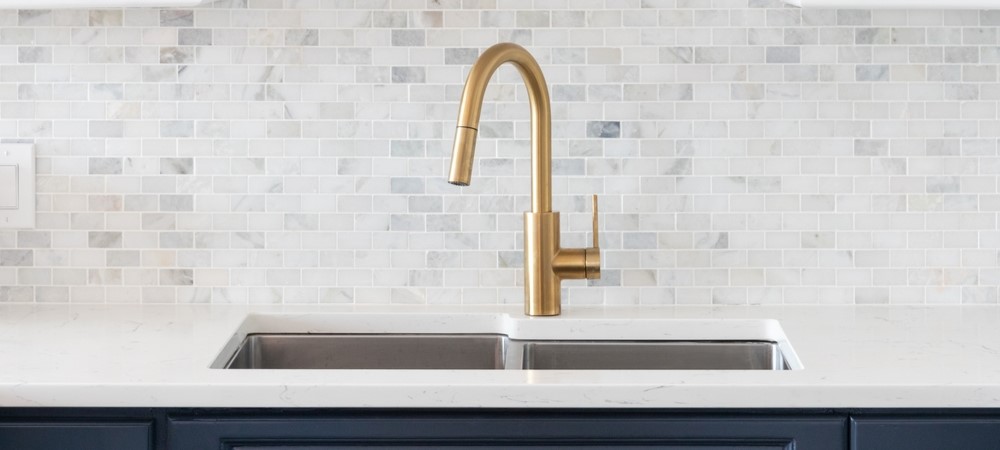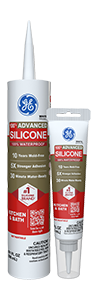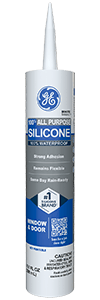Note: This DIY article is provided as a general guide only and is not intended to take the place of product-specific installation procedures; always follow applicable manufacturers’ instructions. Depending on your home’s age and condition, location within the home, and other potential factors, repairs and/or upgrades or other services may be necessary prior to the beginning and/or completion of your project that may involve the services of a home improvement professional. This article does not include advice pertaining to local building codes and/or any related inspections.
The kitchen backsplash is an integral part of the kitchen and your home. However, there is more than what meets the eye (literally) regarding this kitchen fixture. In this article, you will learn how to install a kitchen backsplash and seal it from water damage.
Sealant provides a physical barrier preventing moisture from seeping through and reaching the tiles and grout that make up your kitchen backsplash. Sealant should be applied after grout has been applied and allowed to cure.
How to install kitchen backsplash: Why it’s important
A kitchen backsplash serves more than gracing your eyes and livening up your kitchen space. It is no coincidence that the backsplash is present solely in areas where moisture is presumed to come into contact with the walls. Most backsplashes are made from stone, as the material is durable and has some significant water resistance.
However, over time, the stone may be degraded by long-standing water seeping through microscopic porous holes in the stone’s structure. It is worth noting that the backsplash appears faded once this occurs, and this process is irreversible. Consequently, the following are some of the reasons why it is essential to seal your backsplash.
Protection from water damage
Mold, mildew, and structural damage become your worst enemies once water sets on the tiles or grout in your backsplash. Sealant provides an extra layer of protection, preventing the insidious infiltration of water.
Protection from moisture
Another reason why the question “how to apply a backsplash” should always be followed by “with sealant” is that the sealant prevents moisture from getting under or behind the backsplash.
Easy Cleaning
You know how to put up a backsplash and understand what it means for your kitchen. But what are the benefits of backsplash? The answer lies in the ease of cleaning. Since no dirt or grime is getting into your tiles, it remains on the surface, making it easy to wipe down or clean (you don’t have to whip up a concoction of vinegar and baking soda to eliminate any odors).
Durability
Another reason why you should learn how to install a tile backsplash is the durability it offers to your kitchen. As mentioned earlier, water seeping through the backsplash may cause the growth of mold and mildew or interfere with the innate structure of the tiles. Sealant saves you from worrying about premature backsplash replacement costs.
How to install backsplash: Where sealant comes in
Depending on whether your backsplash was recently installed or has already lasted for a significant period since installation, the steps where the sealant is applicable vary.
How to install kitchen backsplash sealant around recently done tiles
If your kitchen backsplash has been recently tiled, let the grout cure before applying silicone sealant over the backsplash. On average, you may have to wait 24 hours before the backsplash is ready for the sealant. Before applying the sealant, you can brush off any grout haze that may be present using a cleaner and then apply the sealant.
The kitchen backsplash installation process is as follows:
- Surface preparation
- Adhesive application
- Tile installation
- Grout application
- Sealant application
How to install tile backsplash sealant for existing backsplash
Installing backsplash sealant on an existing kitchen backsplash is easier because you do not have to worry about allowing the grout to cure before applying the sealant. In this case, all you have to do is clean the surface of the backsplash and apply sealant around the tiles and grout.
To maintain safety, wear gloves and eye protection. You can also use your gloved finger to smoothen out the sealant.
How to properly clean and care for a backsplash
You know how to install a backsplash, but can you maintain it? Applying sealant is only half of the story when it comes to prolonging the lifespan of your sealant. Going the distance to improve the backsplash longevity will involve routinely carrying out the following procedures.
Regular Cleaning
Regularly cleaning the backsplash will slow down the natural degradation process of the sealant, allowing your backsplash to last longer. It would help if you prioritized using warm water and detergent when cleaning and avoided using abrasive brushes that may permanently etch the surface of the sealant and interfere with its integrity.
Use chemicals with neutral pH
Sealant is made from silicone compounds and, therefore, can be chemically altered by harsh detergents. When cleaning, you should avoid acidic or basic detergents, which may break down the sealant barrier over time.
Inspect and reapply sealant
Sealants may break down due to natural wear and tear processes, consequently exposing the tiles and grout to moisture that may cause water damage. Therefore, you must monitor the backsplash for evidence of these faults and reapply the sealant accordingly to maintain the barrier’s integrity.
Immediately clean up spills
Still, water against your backsplash may eventually seep through the tiles and grout past the sealant. To avoid any associated water damage, immediately clean up any spills and splashes that may settle on your backsplash.
Sealant bears the brunt of water damage that would otherwise affect the tiles and grout in your kitchen backsplash. This helps you avoid having to cough up thousands of dollars to replace a worn-out and faded kitchen backsplash.
Before the stains become permanent and your kitchen backsplash fades, you should consider applying high-quality sealant and enjoy the numerous benefits of a fully functional and easy-to-clean backsplash.
To find GE products near you, check out our Where to Buy page.



